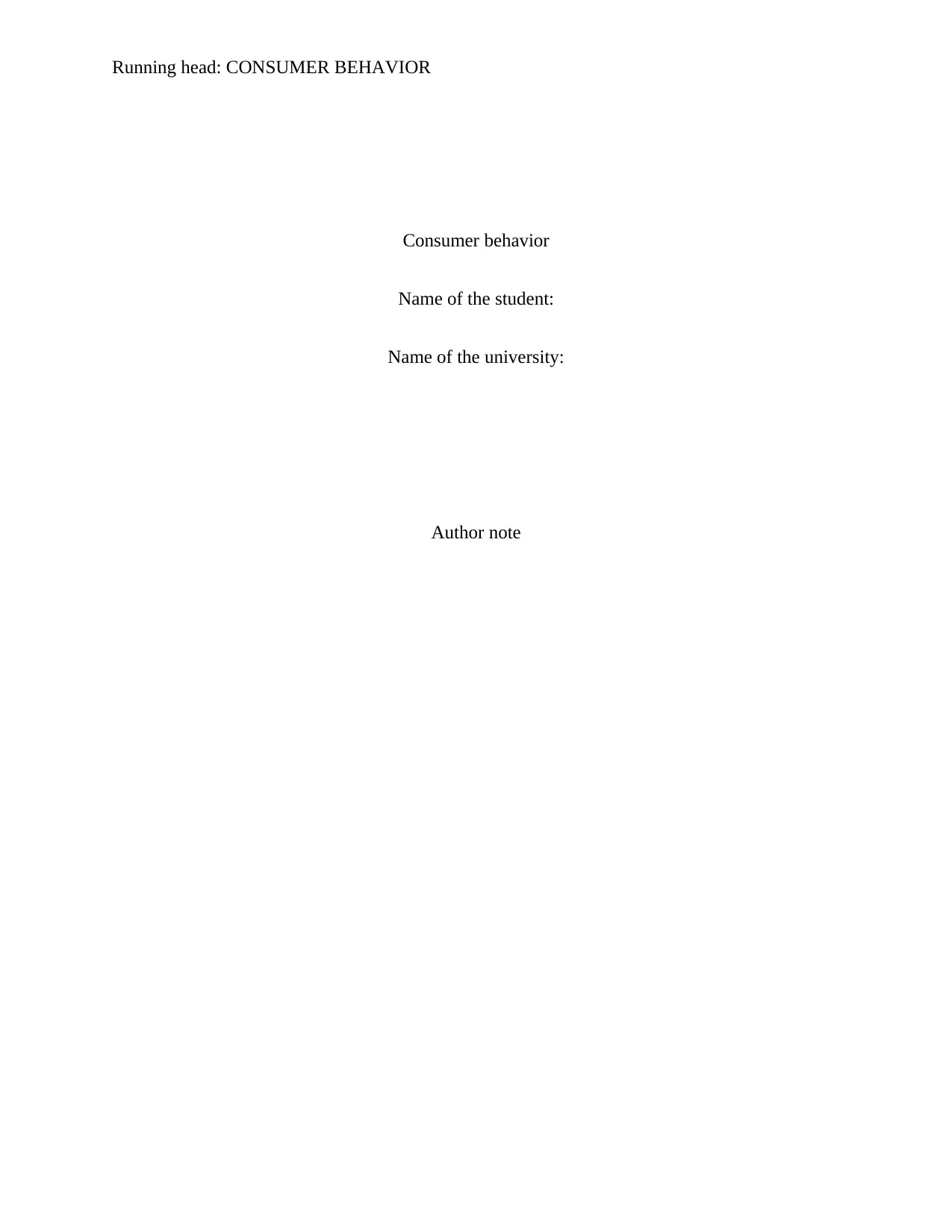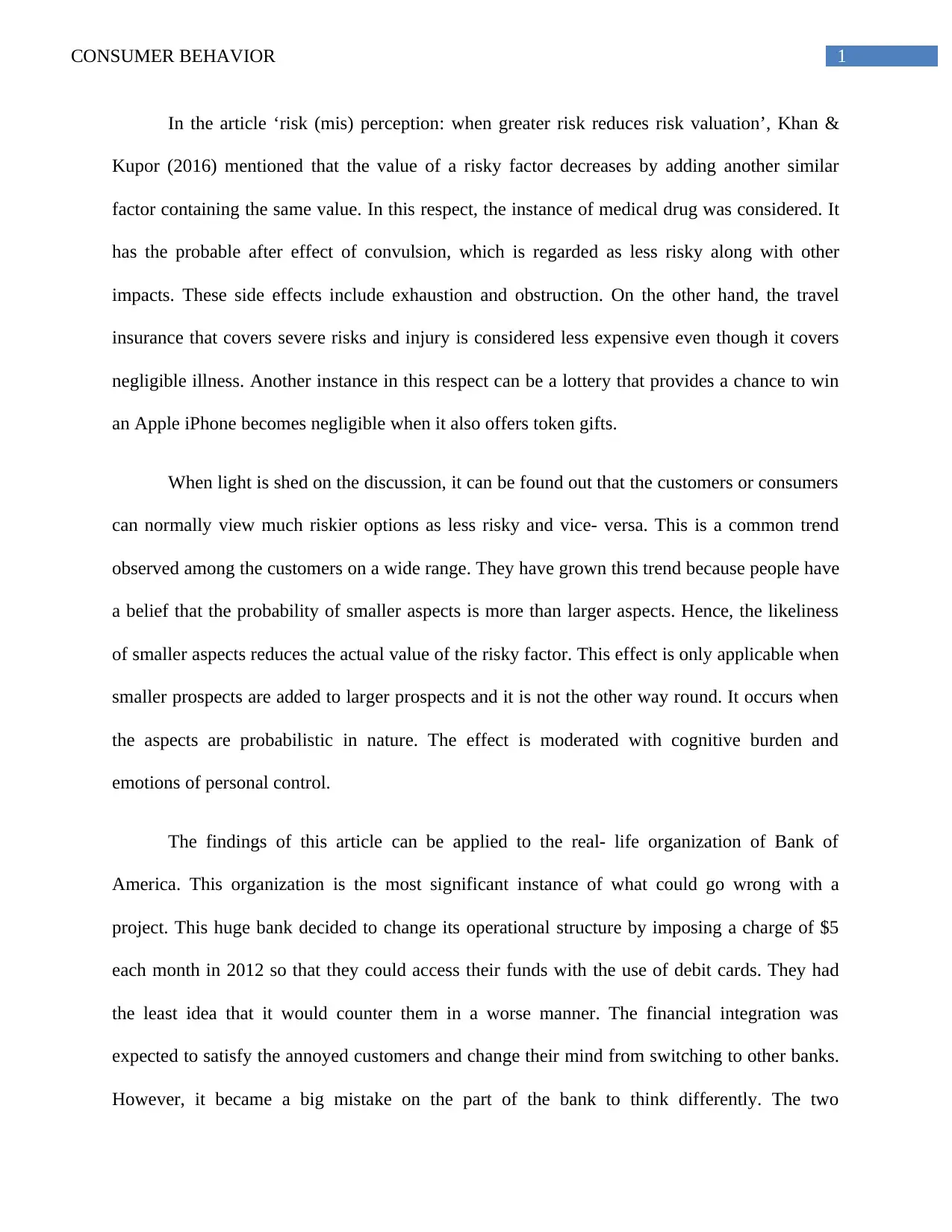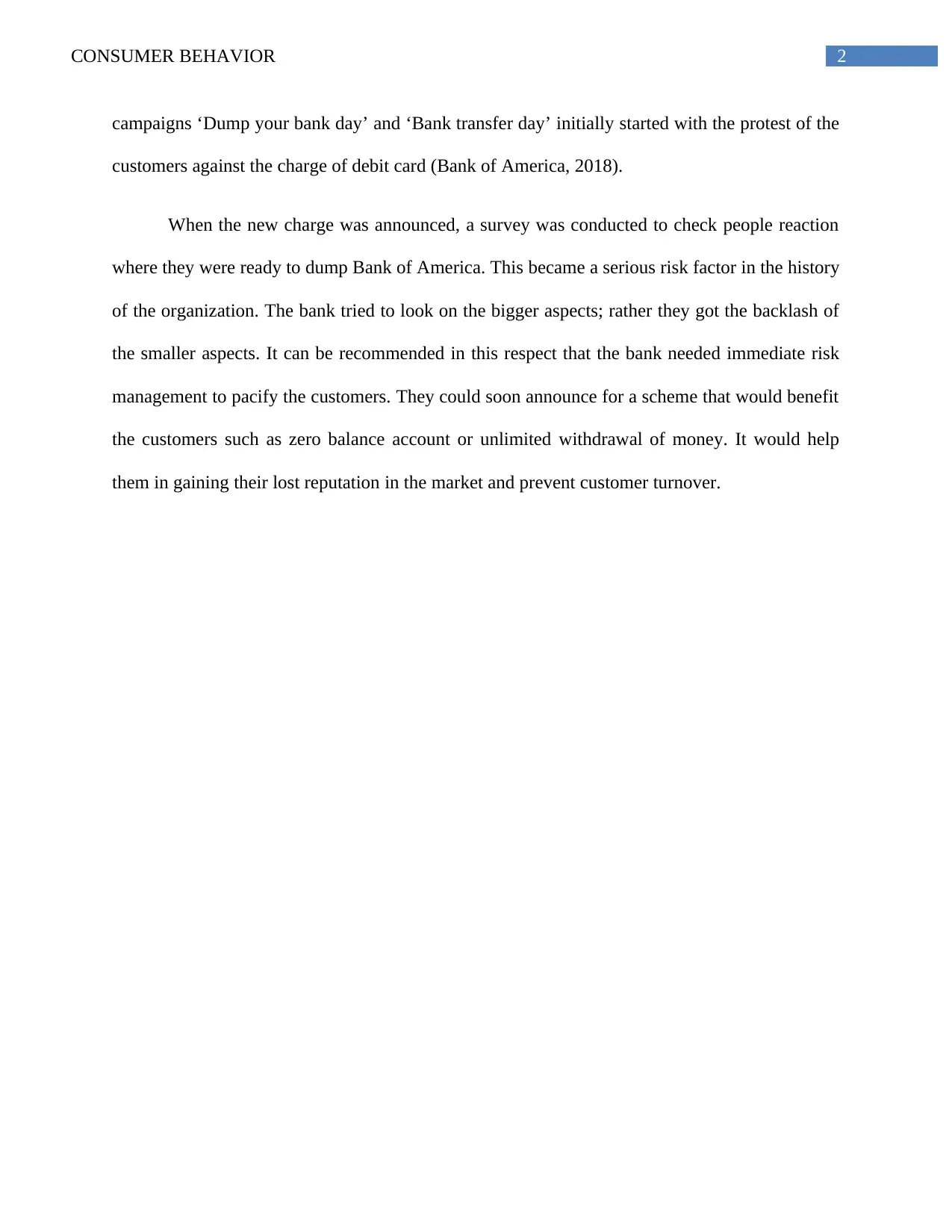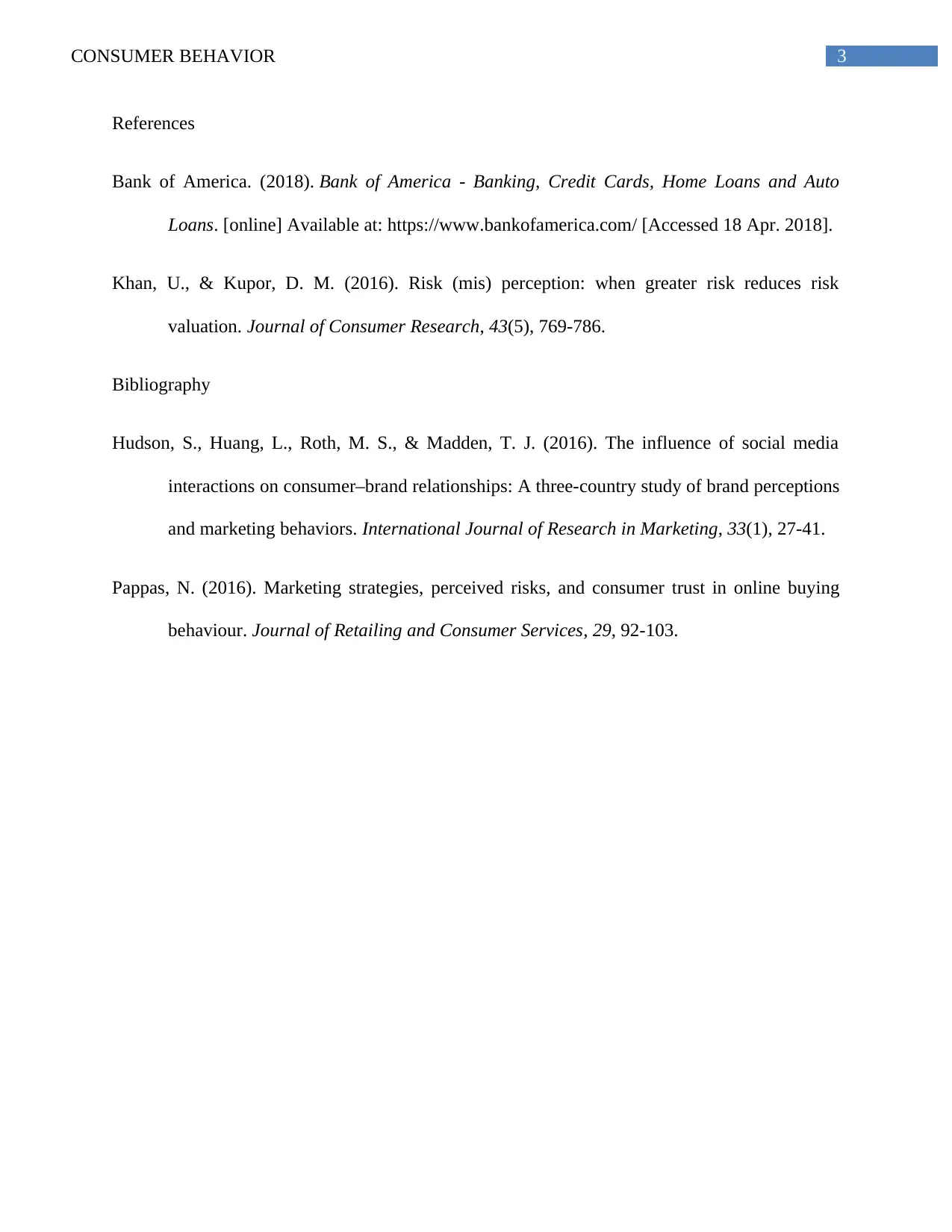Case Study: Consumer Risk Misperception and Bank of America's Crisis
VerifiedAdded on 2023/06/13
|4
|734
|113
Case Study
AI Summary
This case study analyzes consumer behavior concerning risk perception, referencing Khan & Kupor's research on how the valuation of a risky factor decreases with the addition of another similar factor. It applies these findings to Bank of America's 2012 decision to impose a monthly fee for debit card usage, which led to significant customer backlash and the 'Dump your bank day' protest. The bank's misjudgment of customer risk perception resulted in reputational damage and customer turnover. The study suggests that Bank of America should have implemented immediate risk management strategies, such as offering customer-friendly schemes, to regain their market reputation and prevent further customer losses. The case highlights the importance of understanding consumer psychology in business decisions and risk management.
1 out of 4






![[object Object]](/_next/static/media/star-bottom.7253800d.svg)